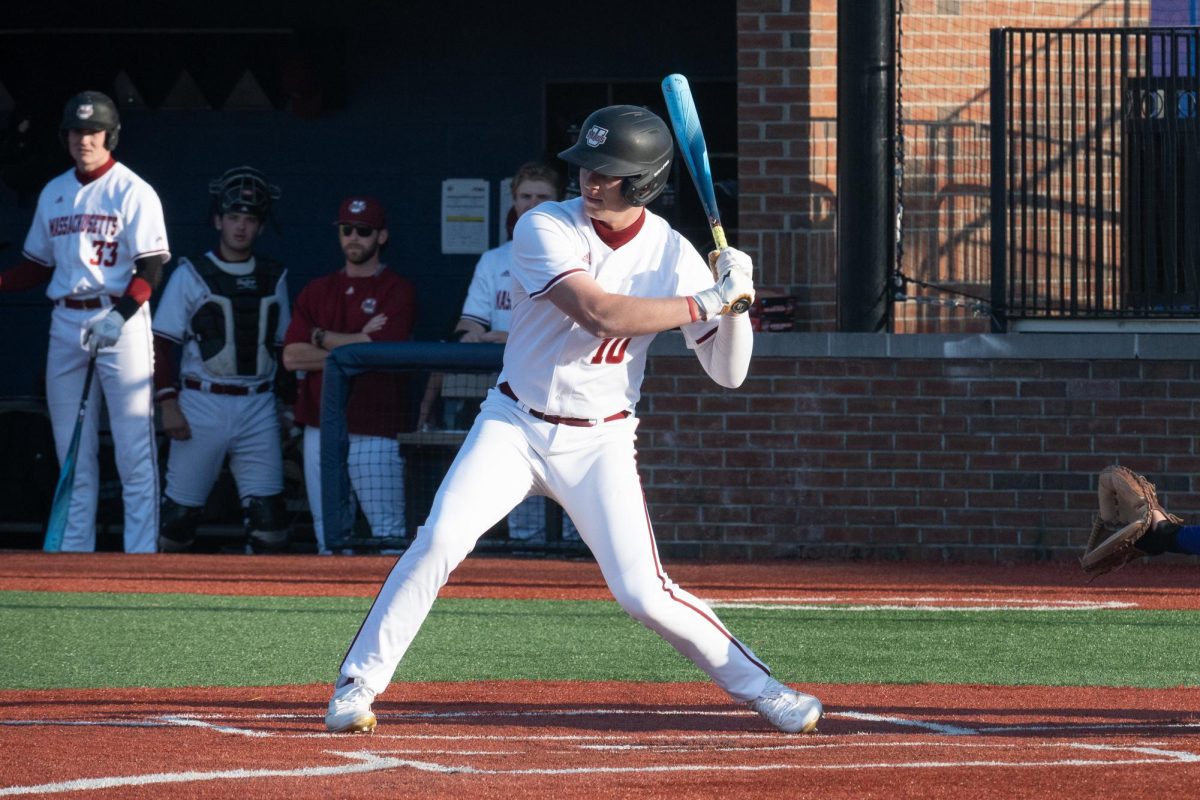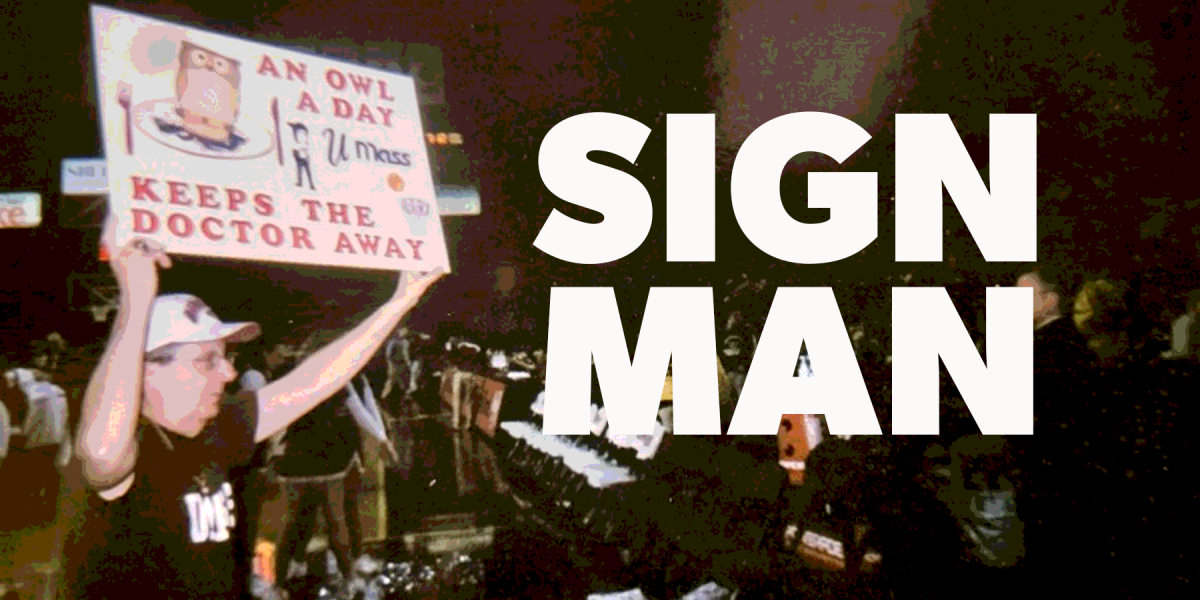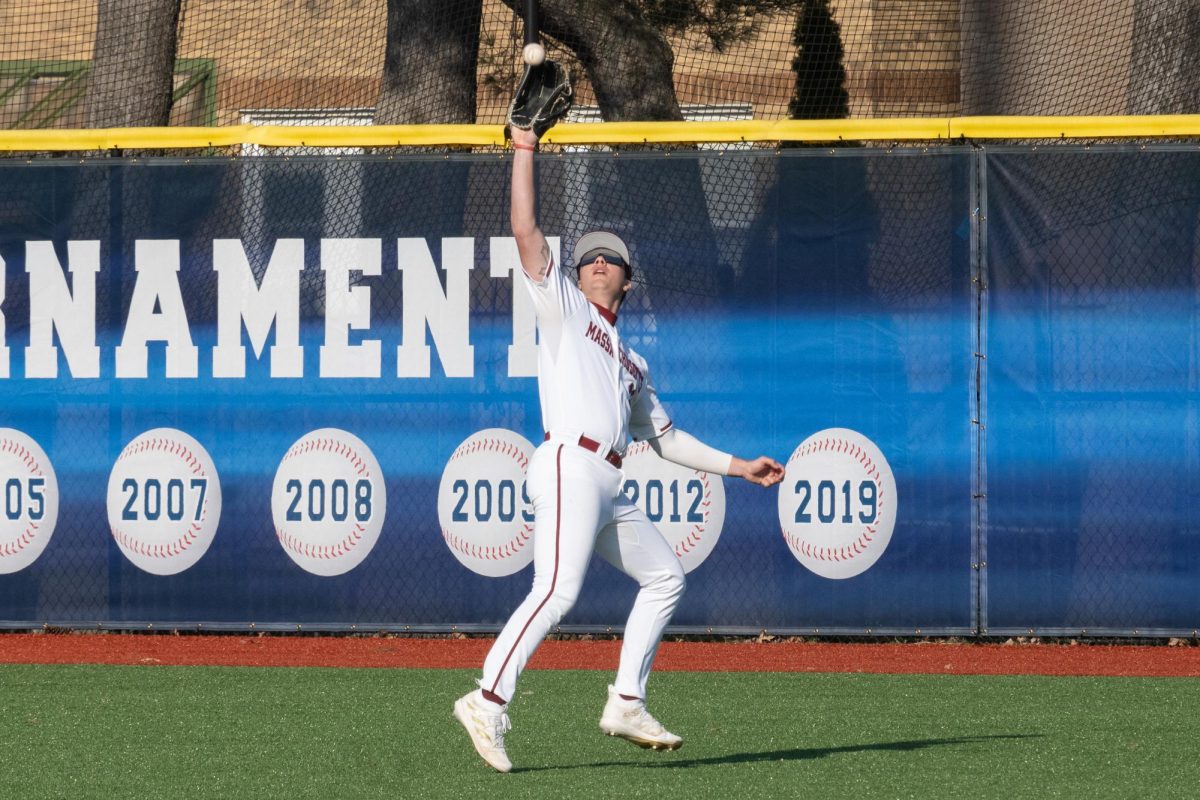
Police were out in full force to provide security for this year’s “Blarney Blowout” celebration. With only seven arrests and ten court summonses made, the tight grip that the University of Massachusetts and hundreds of police officers from varying forces had on the drunken students appears to be a huge success, considering the 55 arrested during the event in 2014.
Is the lack of students in jail and possibly facing expulsion the result of the stepped up approach of the campus and police, or was the day a success because police didn’t overreact? And were students safer, wandering around campus and town from party to party, than they would have been, penned up in a known location?
These are important questions to ask when an institution of higher learning decides it is necessary to install a police state for a day in order to protect the town from the students and the students from themselves. College has practically always been the place where parties get out of hand and kids blow off a bit of steam. It’s only recently that drunk college students have been treated like a true security threat and that does not seem to make any sense.
During the 2014 Blarney Blowout, things got so out of hand that even Time magazine wrote an article about the event. After 2014, it was even seen as necessary for the former Boston police commissioner, Edward Davis, to write a report analyzing Blarney.
The report concluded that 2014 was such a huge problem as a result of poor police coordination, the event itself and gatherings of students of such a nature, and some preemptive force used by the police, such as firing tear gas at the partiers. Many of the people arrested were not UMass students. This has resulted in the bans on visitors and parking during the Blarney weekend.
There are some problems here.
The tear gas was a little bit more than a preemptive strike. I’ll never forget the video I saw of a young man standing as an officer walked over to him from afar and sprayed him point-blank in the face with pepper spray. The student was drunk, sure, and he was yelling some profanities, but he wasn’t doing anything that warranted being pepper sprayed from six inches away. That can seriously injure someone.
You also have to wonder about the bans on visitors and parking over the weekend. When have people ever really been deterred from partying as they please because of a few new rules? At least when the dorms were dangerously overcrowded and the parking lots were full, visitors weren’t being forced to choose between driving home drunk or not attending the Blarney weekend at all. With a floor to crash on and maybe a blanket from a friend, any buddy of a college student is endangering far fewer people that getting behind the wheel while seeing double. Banning official visitors probably deterred a few from showing up, but friends are still going to find a way to get drunk with their friends.
In previous Blarney Blowouts, the students would certainly make a mess at the apartment complexes and it is easy to imagine this as a hassle to residents, and even those living within a mile who can usually here the dull roar like thunder in the distance. On the other hand, though, with students inevitably partying, isn’t it better for them to be in one place so that they can be monitored properly?
It’s not like there weren’t drunk young people stumbling all over town on Saturday. It happens every year and it happens every time a Massachusetts sports team does anything. Last time the Red Sox won, a panel on my car got smashed in by a stray beer can.
Instead of being in one semi-dangerous muddy pit that the police could easily observe from all angles, partiers were scattered at various parties all across town, which probably disturbed the peace for just as many people.
Half of the reason students became so unruly and violent during 2014 was because they were choking and crying from the tear gas fired at them even when they were agreeing to disperse. There’s no better way to create violence than by starting it.
The main problem in all of the Blarney Blowout events, though, is the drinking culture that invades the minds of students as they enter school. Drinking isn’t a bad thing, necessarily, but excessive drinking is dangerous in so many ways there isn’t even a point in describing them. We all know. I got pancreatitis from a night of over-drinking when I was 19, so I know what a few too many shots can do to a body.
Davis’ report highlights this problem of drinking culture for students, and the report is accurate. While this year’s Blarney Blowout paled in comparison to that of previous years, as far as arrests go, not much changed for the students. They were still all over town, wasted. The campus and police used what we can only assume must have been large amounts of resources to to provide a secure campus environment this weekend. They didn’t do anything to protect the students, though; they just didn’t assault them.
Ian Hagerty is a Collegian columnist and can be reached at [email protected].



















The_Chairman • Mar 11, 2016 at 10:25 am
@Zac Bears
What are these “underlying problems” that the administration ignores? I suspect that the previous commentator J.A. was right…the problem can loosely be referred to as “culture,” although there is probably actual psychological theory behind it (mob mentality, American’s consumer culture, and so forth). If that’s true, then there’s little the administration can do other than what they did. In previous years, authorities have largely reacted to events and didn’t try to control them, and last year many (rightly) criticized the reactions as inappropriate. But this year authorities actively tried to prevent conflicts from arising in the first place, which I think was the correct approach.
I have to say, this article is pretty difficult to respond to because so many claims are made with no evidence. The questions posed at the beginning are deemed important in light of the recent treatment of drunks as a “security threat,” which really doesn’t require much explanation, in spite of the author’s claiming that the measures “make no sense” because parties “always…get out of hand.”
But anyway, on to the questions:
1. “Is the lack of students in jail and possibly facing expulsion the result of the stepped up approach of the campus and police, or was the day a success because police didn’t overreact?”
These explanations are not separate; the latter is a result of the former. The was nothing to react to, as I explained previously.
2. “Were students safer…?”
I’m not sure that students being “penned up” in a massive party really makes them safer. Last year, 18-20 people were taken to the hospital. This year, only four. Either 2016 was indeed safer, or there were far fewer participants…which would disprove the author’s baseless claim that measures to prevent people from coming to UMass couldn’t work. And as is well-known, most of the trouble comes from non-UMass students, so preventing them from coming here was crucial.
I submit to you that preventing these events from occurring in the first place is, in fact, protecting students, or least people as a whole. The fact is that far fewer people went to the hospital this year, which means that far fewer people flirted with death or serious injury, and the means for accomplishing that were perfectly reasonable and effective.
J. Burbank • Mar 9, 2016 at 2:52 pm
Agree with J.A. In the upside- down world where good is bad, to defend a students’ right to drink into oblivion, wreak havoc on their surroundings, toss rocks at cops is pretty insane. It’s the normalization of deviant behavior. UMass is an excellent school in an amazing location. Enabling these shenanigans only serves to diminish the value of a UMass degree. Very glad the UMass administration, student leaders and campus police are now working together to end these disasters.
Zac Bears • Mar 9, 2016 at 2:02 pm
All this article does is say that spending hundreds of thousands of dollars to create a police state that doesn’t actually solve the underlying problem is a poor solution from administrators so afraid of bad press that they’re unwilling to find creative, productive solutions. Great column, Ian.
J.A. • Mar 8, 2016 at 10:38 am
Dear Writer,
With all due respect, and having worked at UMASS in the past, rioting and events such as these are NOT what the college experience is all about. I’ve been working, studying, and living at universities since 1992 when I first left the US Navy, and it was not until I arrived at UMASS in 2007 that I first experienced what a student riot was like.
There have obviously been a few studies attempting to analyze and explain college rioting of the kind mentioned in this article, and a few conclusions are reached; however, there are two that are worth mentioning.
The first is location. I’ve taught and have worked at large universities in 2/4 largest cities in the US and the first difference/feel one gets in Amherst is that it is a village. Yes, it is a village where there is NOTHING to do except get drunk, especially after long winters.
Trust me when I say that the “College experience” is NOT about getting drunk, but about getting into large amounts of debt under the guise that you are supposed to get “educated” with proof in paper…
Secondly, drinking and rioting are part of the local culture, the same way that guns and hunting are in Alabama or Georgia. This is not merely my observation, but it was made 2 years ago during the blowout mentioned in this article. Remember the images that were circulating, like this one…http://www.victoriana.com/history/images/mail6.jpg
It is difficult to appreciate the role of culture and “history” when you are in the thick of it, as this article is.
As an outsider, and during my first semester at UMASS, I once followed a student/parent tour of the campus. You know the ones I’m talking about: where an undergraduate is standing on some elevated surface describing the campus architecture and history and promises of coming to UMASS…
During one of those encounters I stopped to listen in on the lecture and overheard a parent tell their child about how drunk they had gotten in so and so dorms, and lost their virginity, or their mind, or something else… Who knows, who cares, but you get the point…
It struck me the conditions for rioting and drinking, whether it be for the New England Patriots, the Boston Red Socks, or St. Patricks Day, are necessarily also influenced by a larger cultural practice that goes back generations. And on some level, this sort of behavior is not only expected, but defended…as this article attempts to do….
Cheers,
JAH
Colin • Mar 7, 2016 at 10:31 am
In 2014 the Amherst Police did not create violence and did not start violence.
Colin • Mar 7, 2016 at 10:25 am
Ian Hegarty I disagree with you. The Amherst Police did not assault Students in 2014. The Amherst Police did a good job in 2014. The only reason the Amherst Police used tear gas in 2014 was because Students started throwing and were throwing rocks, beer cans, and beer bottles at the Amherst Police. Once again in my opinion the Amherst Police did a great job in 2014.